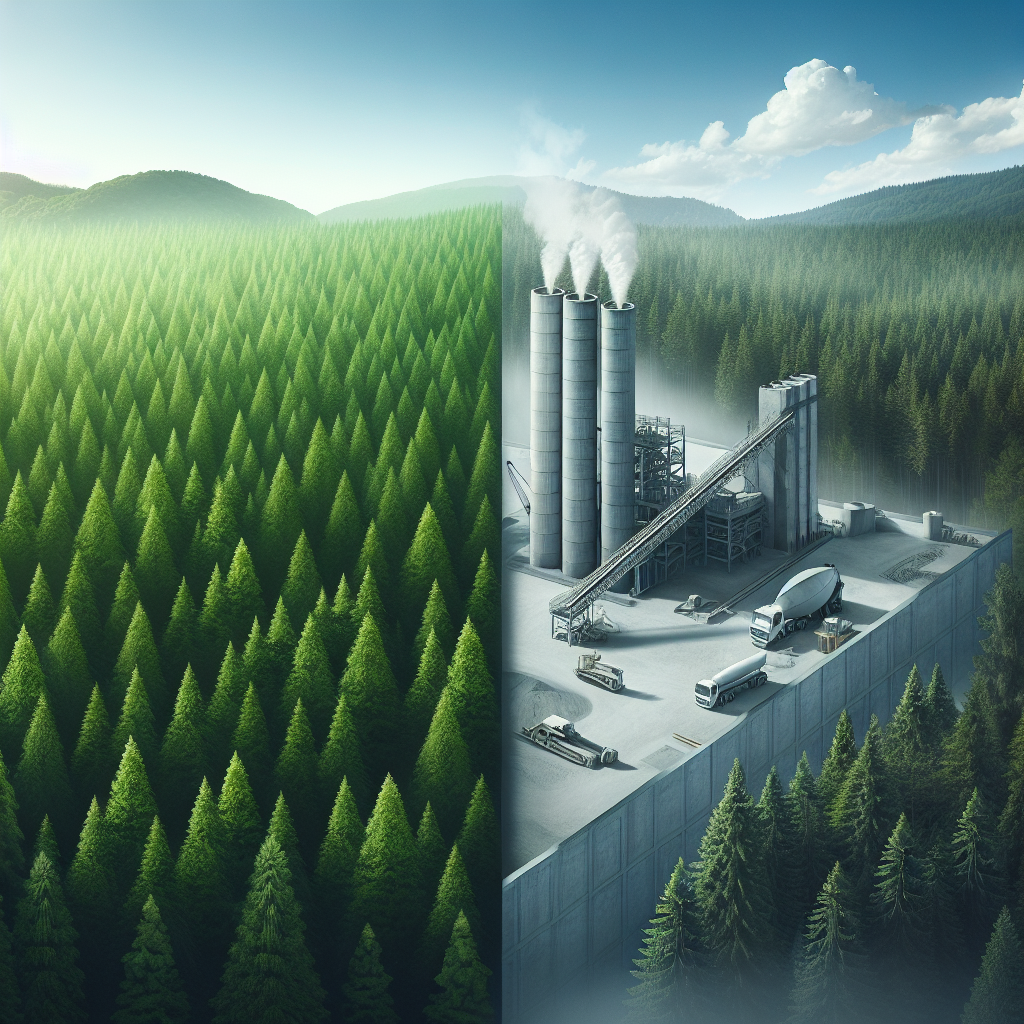The Debate Over Concrete: Environmental Villain or Necessary Evil?
In the vast expanse of modern construction and urban development, concrete emerges as a foundational pillar. Its ubiquity is undeniable, seen in everything from towering skyscrapers to the very sidewalks beneath our feet. Yet, as society progresses towards environmental consciousness, the use of concrete has sparked a heated debate. Is it an environmental villain wreaking havoc on our planet, or is it a necessary evil in our quest for development and progress?
The Environmental Impact of Concrete
Concrete’s environmental footprint is significant, primarily due to the production of Portland cement, a key ingredient. The process involves the calcination of limestone, which releases considerable amounts of carbon dioxide (CO2), a potent greenhouse gas. It is estimated that for every ton of cement produced, approximately one ton of CO2 is released into the atmosphere, contributing to about 8% of global CO2 emissions. This stark figure places the cement industry among the largest CO2 emitters, trailing only behind the energy sector.
Furthermore, the extraction of raw materials for concrete production, such as sand and aggregates, has led to environmental degradation, including habitat destruction and riverbed erosion. The demand for these materials is so high that illegal sand mining has become a rampant issue in some regions, exacerbating environmental damage and undermining regulatory efforts.
The Indispensable Nature of Concrete
Despite its environmental drawbacks, concrete’s role in modern society cannot be overstated. Its durability, strength, and versatility make it an indispensable material in construction. Concrete is pivotal in building infrastructure that is resilient to natural disasters, from earthquakes to hurricanes, thereby saving lives and reducing the need for frequent rebuilds. Moreover, concrete’s thermal mass can improve the energy efficiency of buildings, contributing to reduced heating and cooling costs over time.
The material’s longevity and low maintenance requirements further underscore its utility, offering a sustainable aspect in terms of resource efficiency over the long term. In areas lacking access to clean water, concrete infrastructure plays a crucial role in sanitation, directly impacting public health and well-being.
Bridging the Divide: Innovations and Alternatives
The concrete conundrum necessitates a balanced approach, one that acknowledges its indispensable role while mitigating its environmental impact. Innovations in the industry aim to create more sustainable forms of concrete, such as those using alternative, less carbon-intensive binders to replace Portland cement. The use of industrial by-products like fly ash and slag in concrete mixes not only reduces CO2 emissions but also addresses waste management issues.
Recycling concrete from demolition projects is another avenue for reducing the environmental impact, conserving raw materials, and lowering emissions associated with new material production. Moreover, research into carbon capture and storage (CCS) technologies presents a promising frontier for decarbonizing cement production, potentially transforming concrete from a carbon source to a carbon sink.
The Path Forward
The debate over concrete is emblematic of broader challenges in balancing development with environmental stewardship. It is clear that outright eliminating concrete from our construction repertoire is neither feasible nor desirable, given its critical role in society. Instead, the focus should be on enhancing the sustainability of concrete through innovative practices, regulatory frameworks, and global cooperation to reduce its carbon footprint.
As we venture further into the 21st century, the construction industry must continue to evolve, embracing green building standards and sustainable materials. In doing so, we can harness the benefits of concrete while addressing the urgent need for environmental protection and climate action.
FAQs
Q: Why is concrete considered bad for the environment?
A: Concrete is mainly criticized for its environmental impact due to the high CO2 emissions from cement production, the extensive extraction of raw materials leading to habitat destruction, and the energy-intensive nature of its manufacturing process.
Q: Can concrete be made more environmentally friendly?
A: Yes, through the use of alternative materials to replace Portland cement, incorporating industrial by-products like fly ash and slag, recycling concrete, and developing carbon capture technologies, the environmental footprint of concrete can be significantly reduced.
Q: Is there an alternative to concrete that is more sustainable?
A: While there are alternative materials such as rammed earth, bamboo, and timber that offer more sustainable profiles, each comes with its own set of limitations regarding strength, durability, and applicability. Innovations in concrete remain crucial due to its unparalleled structural properties.
Q: How can I contribute to making concrete use more sustainable?
A: Individuals can advocate for and support sustainable building practices, including the use of green concrete and recycling. Supporting policies and initiatives aimed at reducing the carbon footprint of construction materials also contributes to broader efforts.
Q: Will concrete continue to be a major construction material in the future?
A: Given its strength, durability, and versatility, concrete is likely to remain a cornerstone of construction for the foreseeable future. However, its composition and the methods of its production will inevitably evolve to meet the demands of sustainability and innovation.
In conclusion, while the debate over concrete’s environmental impact is complex, it’s clear that the material is both a challenge and a necessity. Through innovation and commitment to sustainability, we can mitigate the negative impacts while leveraging concrete’s benefits for society’s advancement.

